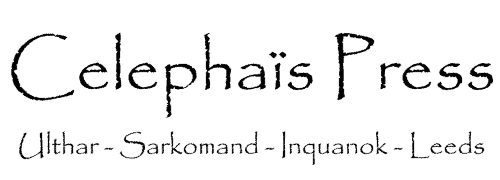The actual graphics work on these was done some years ago, but I lost the vector files when my hard drive died. After some searching a couple of days ago I discovered this PDF in the "sent mail" folder of one of my webmail accounts, and since a few people had expressed interest after I'd uploaded some low-rez images to a Facebook page, I've put the whole thing on Scribd.
Part of the elaboration of "Enochian Magic" taught in the Ordo R.R. et A.C. (the inner circle of the Hermetic Order of the Golden Dawn) involved a scheme whereby various Egyptian Gods were assigned to the Servient Squares of the Great Table / Table of the Earth / Table of Watchtowers / Elemental Tablets. This is tabulated and the forms described in one of the papers comprising The Book of the Concourse of the Forces, edited versions of which appear in The Golden Dawn and The Complete Golden Dawn System of Magic, edited by F.I. Regardie (both publications accompanied by some execrably drawn images, in which the throne headdress of Isis got turned into something looking like a piece of plumbing, and both the "basket" of Nephthys' headdress and the cows' horns of Hathor were spuriously rendered as lunar crescents).
The illustrations here were either lifted directly from plates to Gods of the Egyptians by E.A. Wallis Budge or cut and pasted together from figures in the same book, with the exception of the head of Bast which was taken from the Ulthar Cat Sanctuary collection of cat photographs. Colours are according to the G.D. scheme of colours which is largely based on the elemental attributions of these figures, with one exception noted below.
Since the PDF as posted has no text at all (it was prepared for members of a small ad hoc study group in which I was involved, which had access to the relevant books and where any necessary explanation could be supplied verbally), followeth a key to who is who:
First row, left to right -- Gods set over squares with 3 or 4 different elemental influences.
- The Sons of Horus (Hapy, Imesty, Duamutef, Qebsennuf)
- Osiris.
- Horus (the group nicknamed this one "Teenage Horus" as contrasted with the elder and child Horus).
- Isis.
- Aroueris (the Elder Horus). This is doubtful. The figure and its colouring are as per the description in the G.D. paper, but in Budge's book the image here used was captioned as being someone else entirely (I forget who now).
- Nephthys. In the GD scheme her dress is black rather than the dark red shown here, in accordance with the attribution to the element of Earth. It probably should be a dress too; the leggings she's shown wearing here, I suspect to be an invention of Budge's illustrator who was probably getting bored at this point.
- Bast.
- Sekhmet. I'm not particularly happy with the ears on this one. Or the head generally, actually. The identification of Bast and Sekhmet happens in a syncretic age; originally they were different deities with different cult-centres and different associations. Both are attributed in this scheme to a mixture of Fire and Air.
- Anubis. I retouched the illustration in Gods of the Egyptians to make him slightly less skinny. Air / Earth.
- Hathor. I suspect either the original artist whose rendering of her was used as a basis, or Budge's illustrator, made a mess of her right shoulder and drew the nemyss this way to cover it up. Earth / Water.
- Harpocrates (the child Horus) -- Air / Water.
- Apis. The figure used here, while matching the description, is more strictly that of Serapis; the Apis bull itself was only rarely depicted as a bull-headed man -- Earth / Fire.
- Doubtful. The paper on the God-forms attaches this description to the name of "Sothis" (Sopdet), but it lacks her distinctive emblem of the five-pointed star, and only the very earliest depictions made Sothis cow-headed. This particular combination of iconography (cow's head, horns + double plumes + solar disc) turns up on some minor cow-goddess figures who were later assimilated to Hathor. Fire / Water.


